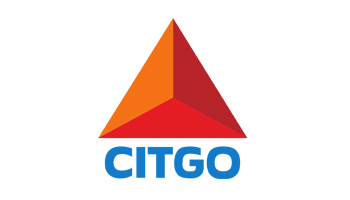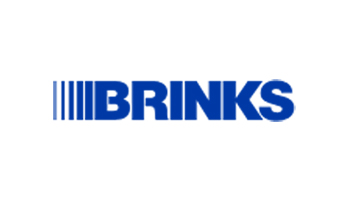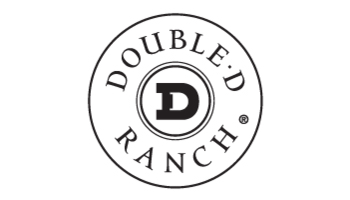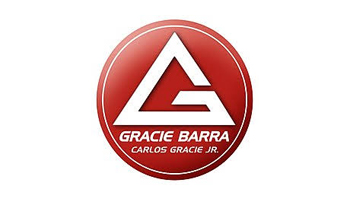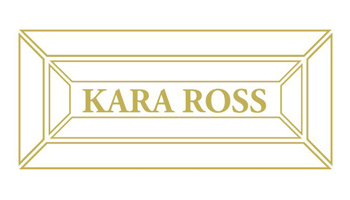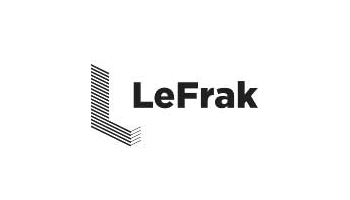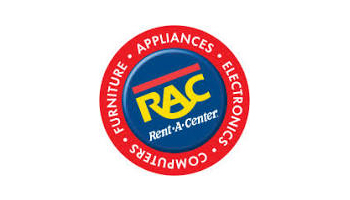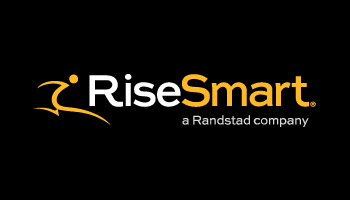
We’ve all heard the phrase “your comfort zone will kill you” but is there really any truth to it?
Well, while it won’t quite literally kill you, it can kill your business, motivation, self-esteem, and prevent you from reaching goals.
What is the comfort zone exactly?

The comfort zone, as defined by Lifehacker, is a “behavioral space where your activities and behaviors fit a routine and pattern that minimizes stress and risk” — the operative words here being stress and risk. In our comfort zone, there is a sense of familiarity, security and certainty. When we step outside of our comfort zone, we’re taking a risk, and opening ourselves up to the possibility of stress and anxiety; we’re not quite sure what will happen and how we’ll react.
https://www.huffpost.com/entry/stepping-outside-your-comfort-zone_n_5872638
Well, that doesn’t sound that bad… In fact, it sounds like a pretty decent place to be.
Your comfort zone is the space where you’ve defined a preset of rules, regulations, stipulations, etc. that all minimize your stress levels and risks. You might think that it’s a good thing, but it’s really not. Let’s look at two examples:
Personal Comfort Zone: Let’s pretend that you have severe anxiety. Leaving the house can be stressful, but you get really stressed out in big crowds. Your heartbeat rises, you start sweating, and it’s a high level of discomfort any time you enter a place that has a lot of people. This discomfort can lead you to quickly avoid going anywhere that has the potential of being crowded. At first glance, that might not seem like necessarily a bad thing but if you break it down, you’re limiting what you can do and where you go. There might also be instances in which you need to visit a crowded place but avoid it because of your anxiety. Anxiety is also greedy and tends to want more real estate. If you’re giving in to it and avoided crowded places, it might not be long before your anxiety decides that most places are too crowded to visit. Or maybe that your home is the only place you should be.
Business Comfort Zone: You’ve got a pretty good business model going on. You’ve got a company that sells all natural wellness products. People like your products and you’ve got some return customers. However, business has been kind of stagnant lately. You’re not really getting any new customers and/or maybe your current clientele is tapering off. Staying within your comfort zone might seem appealing. After all, you’ve got some business and you’re paying the bills. But if you were to step outside of your comfort zone and offer a wellness exercise regimen or weight-loss products that are also all natural, you’d probably see an influx of business. The risk here is that maybe people won’t like your new business model idea. But the bigger risk is that your business stays stagnant and never grows.
In short, you can’t grow your business and you’re depriving yourself of fantastic opportunities/experiences by staying within your comfort zone.
Our comfort zone is rarely truly rewarding

While staying in your comfort zone can result in consistent, steady performance, stepping out of your comfort zone into a new and challenging task can create the conditions for optimal performance. Think about it: Did you ever do something you were really proud of when you were in autopilot mode?
“In an increasingly competitive, cautious and accelerated world, those who are willing to take risks, step out of their comfort zone and into the discomfort of uncertainty will be those who will reap the biggest rewards,” Margie Warrell writes in Forbes.
https://www.huffpost.com/entry/stepping-outside-your-comfort-zone_n_5872638

Businesses and people that take risks tend to get a higher payout than those that don’t. Think of it this way:
If you’re someone who works a 9 to 5 sitting in front of a computer all day and is guilty of not eating the best, then you’re probably not going to be in the best shape/health. If you stick with this comfort zone of going to work, sitting for most of the day, then coming home and vegging out in front of the TV, you’re not doing your body (or mental health) any favors.
Now let’s say you decide that it’s time for that to change. During your work shift, you get up periodically and stretch or walk around. For lunch, you pack something healthier or maybe you opt to walk to a close by area for lunch instead of driving. You also work in some gym time a few days a week and don’t spend your evening binging Netflix. You’re going to see some serious benefits. You’ll feel better, your body will be healthier, and you’ll probably have more motivation and energy for work and other activities.
The same applies to your business. If you keep whipping up the same material day in and day out, you’re probably never going to reap those big rewards. Take Lush for example. They’re a natural (and insanely popular) bath shop. They started with bath bombs and soaps and they’ve since expanded their empire to include shampoos, conditioners, hair dyes, toothpaste, perfumes, and more. Lush was incredibly popular when they had a limited selection, but now they’ve become an all in one go-to for people all around the world. They continue to reinvent themselves and pump out new products. This has led to even more success for the company.
You don’t have to live outside of your comfort zone
There’s nothing wrong with being in your comfort zone, unless you get too comfortable and start holding yourself back instead of challenging yourself to learn, grow and try new things.
https://www.huffpost.com/entry/stepping-outside-your-comfort-zone_n_5872638
“Being slightly uncomfortable, whether or not by choice, can push us to achieve goals we never thought we could. But it’s important to remember that we don’t need to challenge ourselves and be productive all the time,” as Alina Tugend put it in the New York Times . “It’s good to step out of our comfort zone. But it’s also good to be able to go back in.”
Referring back to Lush, the company is always toeing the line with their comfort zone. They push out new products frequently (think their bath oils, bath jellies, and “naked” products). When one of these doesn’t work, in the case of their bath jellies, the company steps back into its comfort zone. They pump out new bath bombs (a tried and true favorite) while plotting new ways to cross the threshold once again.
Take this to heart and apply it to your business/personal life. You want to step outside of your comfort zone frequently, but it’s also okay to return to that space. You don’t have to constantly live beyond that line; you can still return home to your zone often as long as you’re pushing yourself from time to time.
Benefits to stepping out of your comfort zone:

Stepping outside of your comfort zone increases your creativity
Trying new things has a way of increasing your creativity as well as inspiring you. Referring back to the natural wellness business model, if you’re constantly pushing out the same products, you’re not really exploring your creative side, right? Pushing beyond your predefined boundaries allows you to explore new avenues and get creative with the process. Maybe supplements would benefit your customers (and attract new ones) or perhaps they’d like to sign up for a paid workout/diet regimen that would improve their overall health. There’s no limit to the possibilities once you tap into the creative side of your mind!
You’ll boost your self-confidence
Your self-confidence can’t really grow if you’re doing the same thing day in and day out. Sure, you might be successful but your brain isn’t going to release any feel good chemicals for doing the same thing you did yesterday. Now if you try something new and succeed, your brain will reward you. You’ll also feel a spike of self-confidence and that’ll probably inspire you to really put your heart and soul into it.
What if you fail? Well, keep in mind that it’s part of common humanity. Everyone has experienced failure at some point in their life and not all of your ideas/products are going to work. If something is a miss with your audience or doesn’t work for you personally, take it as a learning experience. See where you can improve and what you can do differently.
Your customers will love you
Sure, you may have roped customers in with your delicious smelling shampoo and conditioner line that restores damaged hair, but they’ll love you even if more if you expand your business model. Maybe women with natural hair will benefit from products that are designed just for them. Ash blonde and silver hair is in: they’d love a shampoo and conditioner that protects their color and keep theirs hair healthy.
Personal growth
Whether you’re working on improving yourself or your business, you’ll grow from stepping outside of your comfort zone. Trying new things is something that your brain actually does crave and whether you’re working on your fitness, diet, or trying to invent new products/services for your business, you’re going to feel better about yourself.
Your life could change for the better
Doors are often hidden or obscured by our comfort zones. By stepping past that line, you may see new opportunities for growth and creativity. Perhaps you’ve been limiting yourself to making clothing options and accessories for pregnant women. It’s a limited model; they only need your services 9 months out of the year at best. And a lot won’t be repeat customers and they damn sure won’t be your customers for life. Stepping past your comfort threshold can allow you to see other opportunities that are relevant: postpartum clothing and accessories, and even things that can help couples prepare for pregnancy. You’ll discover that there’s a lot of possibilities and opportunities out there if you can just cross that line.
The Coronavirus went from being a virus that most people hadn’t really heard of to something that’s gone, well, viral for lack of better terminology. And it all happened faster than any of us could predict.
Doctor Li Wenliang

It started with Chinese doctor Li Wenliang.
Last December he sent a message to fellow medics warning of a virus he thought looked like Sars – another deadly coronavirus.
But he was told by police to ‘stop making false comments’ and was investigated for “spreading rumours”.
“I don’t think he was rumour-mongering. Hasn’t this turned into reality now?” his father, Li Shuying, told the BBC. “My son was wonderful.“
click to read more
As pointed out by the BBC, Wenliang did his best to warn fellow medics about the severity of the virus. Cases had popped up already, but the Chinese media was heavily downplaying it. Residents and tourists alike were encouraged to participate in the Lunar New Year festivities and visit the market.
Wenliang sought to protect those from the virus, but was quickly silenced by authorities. This happened screenshots of his messages (regrettably without cropping out his name), were published online for the world to see.

Li Wenliang contracted the virus and ultimately died from it. This caused outrage around the world; especially in China. Wenliang was being heralded as a hero despite the media’s villainization of him. He was called a “fear-monger” and a “whistle-blower” by media and people around the world chastised him as trying to get his 15 minutes of fame.
“Trump’s impeachment is happening, time to distract us from important things like that to talk about a beer virus!”
This was the unfortunate sentiment that took place. Luckily this thought pattern has tapered off and people are now taking it far more serious. Unfortunately, it came at the cost of many lives.
Where did it come from?

“But to be honest, we still do not know where the virus came from now.”
After the memes died down and the severity of the virus took over, people began to wonder where the hell it came from. After all, there had to be a patient 0 or starting area.
Well, Ground 0 was quickly identified as the WuHan market. This is where the bulk of the cases originated from and seemed to be the most heavily saturated area for the virus. And despite the fact that reports of the virus had come from the market, residents and tourists were still encouraged to visit it. As pointed out earlier, the media and authorities were downplaying the severity.
However, experts now believe that the WuHan market isn’t actually where it all began.
The deadly coronavirus sweeping the globe did not begin in a Chinese fish market.
Instead, researchers warn it was spreading through Wuhan for up to a month before being detected.
Scientists rush to find ‘Patient Zero’ in a bid to stop the coronavirus
Rather than being ground zero, the market place served as a “super highway” or “spreader” of the virus. With so many people being present in tightly confined quarters, the virus could easily jump to new hosts. When questioned about these concerns, the Chinese government kept quiet and continues to do so.
The Lancet, a medical science journal, published an update that you can read here regarding the first reports of the outbreak. Researchers tracked these to 41 original cases and rather than providing some much needed answers, these cases only give us mysteries.
‘No epidemiological link was found between the first patient and later cases,’ they state. In fact, 13 of the first 41 had no link to the market whatsoever.
And as far as patient 0 is concerned, if the identity is known it’s being kept hush-hush. At the time of this article, the identity is still unknown but is being heavily sought after by scientists.
What caused the Outbreak?

Alongside the quest to find ground and patient 0, researchers and the world alike began to ask “what caused the virus?”
In the case of Ebola, patient 0 stumbled across a cave where it was lying dormant. Now that the virus had a chance to inhabit a host, it quickly latched on and patient 0 unknowingly carried it back to infect others.
With this in mind, there had to be a cause for the coronavirus outbreak.
People started pointed fingers everywhere and at first, they were content to land on an unusual culprit: bat soup. Or as you’ve probably seen in memes: bat butt soup.
According to Foreign Policy, a video recently surfaced of a Chinese woman holding an entire bat with chopsticks, appearing to eat the creature in a soup. The Daily Mail also reported on the video, and YouTube channel RT shared the footage. The clip was reportedly met with outrage from Twitter users, who quickly began calling out Chinese eating habits as the cause of the outbreak.
https://www.health.com/condition/infectious-diseases/coronavirus-bat-soup
But is there any truth in this?
Not really.
Bats do contain a number of diseases, germs, and other unpleasantries that should steer you away from eating them, but the Coronavirus didn’t come from a soup made from bats.
Also, the video was recorded nearly 4 years ago. And the woman wasn’t even in WuHan or China for that matter. “Wang Mengyun, is a host of an online travel show who was actually eating a dish in Palau, an island country located in the western Pacific ocean.”
So, where did it come from?
This is where it gets tricky: Coronaviruses in general are large family of viruses that can affect many different species of animals, including camels, cattle, cats, and bats, according to the Centers for Disease Control and Prevention (CDC). In rare cases, those viruses are also zoonotic, which means they can pass between humans and animals—as was the case with Middle East respiratory syndrome (MERS) and severe acute respiratory system (SARS), two severe coronaviruses in people.
Initially, this novel coronavirus was believed to have started in a large seafood or wet market, suggesting animal-to-person spread, according to the CDC. But a large number of people diagnosed with the virus reportedly didn’t have exposure to the wet markets, indicating that person-to-person spread of the virus is also occurring. However, it’s still possible that the novel coronavirus began with an infected animal at the market—and then went on to person-to-person transmission once people were infected.
In fact, that theory—that the novel coronavirus did begin at a wet market—is supported by a new research article in the Journal of Medical Virology. For the article, researchers studied the genetic code of 2019-nCoV and found that it’s most closely related to two SARS-like coronavirus samples, suggesting that it, too, may have had a bat origin. But when researchers looked deeper, they discovered that the protein codes of 2019-nCoV were most like those used in snakes.
The possible reasoning, according to the research article and an article from The Conversation, via CNN: Snakes often hunt bats in the wild—and because snakes were also sold at the seafood market in Wuhan, the novel coronavirus may have jumped from bats to snakes to humans at the beginning of the outbreak. Still, more research on that theory needs to be done—which is especially hard now that the Wuhan seafood market has recently been disinfected and shut down.
Overall, the origin of the novel coronavirus is still filled with what-ifs and maybes, but according to most reports, it’s likeliest that bats (and possibly snakes) are to blame as the animal carriers of 2019-nCoV—but as far as “bat soup” is concerned, it’s just an extremely misinformed (and potentially xenophobic) rumor.
https://www.health.com/condition/infectious-diseases/coronavirus-bat-soup
How does the Virus Spread?

Well, you’re probably not going to like answer. Much isn’t really known about the virus and how it spreads seems to remain largely unknown. According to the CDC:
“This virus probably originally emerged from an animal source but now seems to be spreading from person-to-person. It’s important to note that person-to-person spread can happen on a continuum. Some viruses are highly contagious (like measles), while other viruses are less so. At this time, it’s unclear how easily or sustainably this virus is spreading between people. Learn what is known about the spread of newly emerged coronaviruses.”
Currently, the CDC is encouraging people to do the following:
- Avoid close contact with people who are sick.
- Avoid touching your eyes, nose, and mouth with unwashed hands.
- Stay home when you are sick.
- Cover your cough or sneeze with a tissue, then throw the tissue in the trash.
- Clean and disinfect frequently touched objects and surfaces using a regular household cleaning spray or wipe.
- Follow CDC’s recommendations for using facemask.CDC does not recommend that people who are well wear facemask to protect themselves from respiratory viruses, including 2019-nCoV.
Facemask should be used by people who show symptoms of 2019 novel coronavirus, in order to protect others from the risk of getting infected. The use of facemasks is also crucial for health workers and people who are taking care of someone in close settings (at home or in a health care facility). - Wash your hands often with soap and water for at least 20 seconds, especially after going to the bathroom; before eating; and after blowing your nose, coughing, or sneezing.If soap and water are not readily available, use an alcohol-based hand sanitizer with at least 60% alcohol. Always wash hands with soap and water if hands are visibly dirty.
Also, there is currently no vaccine available for the virus. Currently the CDC is also recommending people to treat the virus like you would a respiratory infection and treat its spread as such.
What are the Symptoms?

The virus isn’t limited to these generic symptoms though. Those with Coronavirus may also experience the following:
Common human coronaviruses, including types 229E, NL63, OC43, and HKU1, usually cause mild to moderate upper-respiratory tract illnesses, like the common cold. Most people get infected with these viruses at some point in their lives. These illnesses usually only last for a short amount of time. Symptoms may include:
runny nose
headache
cough
sore throat
fever
a general feeling of being unwell
Human coronaviruses can sometimes cause lower-respiratory tract illnesses, such as pneumonia or bronchitis. This is more common in people with cardiopulmonary disease, people with weakened immune systems, infants, and older adults.
Two other human coronaviruses, MERS-CoV and SARS-CoV have been known to frequently cause severe symptoms. MERS symptoms usually include fever, cough, and shortness of breath which often progress to pneumonia. About 3 or 4 out of every 10 patients reported with MERS have died. MERS cases continue to occur, primarily in the Arabian Peninsula. SARS symptoms often included fever, chills, and body aches which usually progressed to pneumonia. No human cases of SARS have been reported anywhere in the world since 2004.
https://www.cdc.gov/coronavirus/about/symptoms.html
Diagnosis
“Your healthcare provider may order laboratory tests on respiratory specimens and serum (part of your blood) to detect human coronaviruses. Laboratory testing is more likely to be used if you have severe disease or are suspected of having MERS.“
“If you are experiencing symptoms, you should tell your healthcare provider about any recent travel or contact with animals. Most MERS-CoV infections have been reported from countries in the Arabian Peninsula. Therefore reporting a travel history or contact with camels or camel products is very important when trying to diagnose MERS.“
Outbreak Map
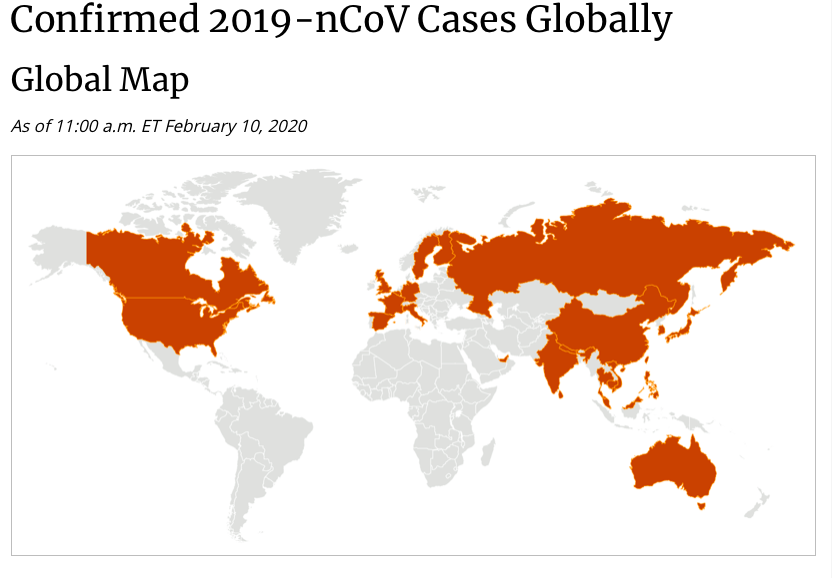
Currently the following locations have confirmed cases of the Coronavirus:
- China
- Hong Kong
- Macau
- Taiwan
- Australia
- Belgium
- Cambodia
- Canada
- Finland
- France
- Germany
- India
- Italy
- Japan
- Malaysia
- Nepal
- Philippines
- Russia
- Sri Lanka
- Singapore
- Spain
- Sweden
- Thailand
- The Republic of Korea
- United Arab Emirates
- United Kingdom
- United States
- Vietnam
Current Outbreak Cases, Deaths, Etc.
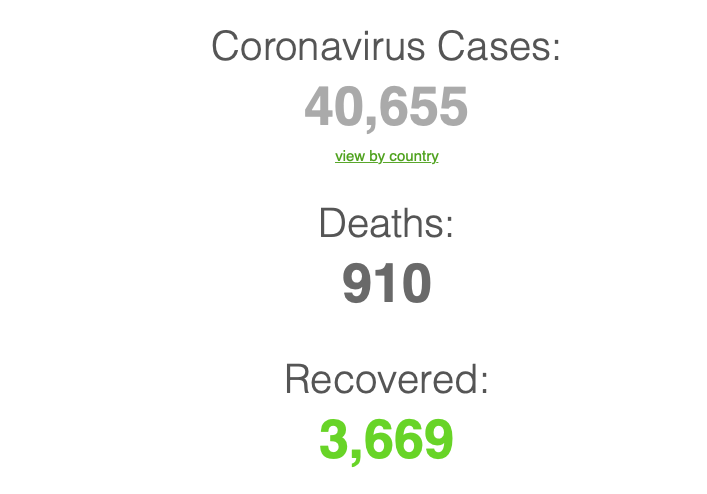
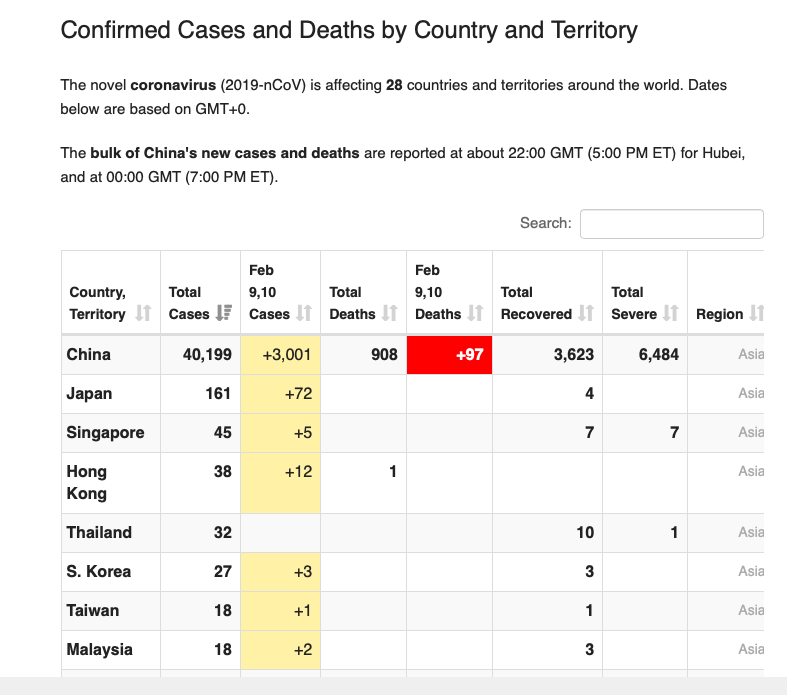



You can visit https://www.worldometers.info/coronavirus/ for more information and updates regarding outbreak and deaths.
When it comes to online searches (and we’re talking all here), Google is responsible for generating 63.5%* of them in the US alone. Local searches also lead around 50% of mobile search users to check out your store within the next 24 hours**. Are you also aware of the fact that ‘business address/location’ is one of the biggest pieces of information that users seek?**
*data according to Statista https://www.statista.com/statistics/267161/market-share-of-search-engines-in-the-united-states/
*data according to Search Engine Land https://searchengineland.com/6-local-seo-stats-every-online-marketer-needs-know-226562
Now that you have a pretty basic idea of why Google is important (if you didn’t already), let’s ask a serious question:
Where does that leave your business in the world of search engines?
Well, luckily Google makes it easy for you to figure this information out. It also allows you to actively manage your online presence and all of this is wrapped up in a nice little package: Google My Business.
What Exactly is Google My Business or GMB?
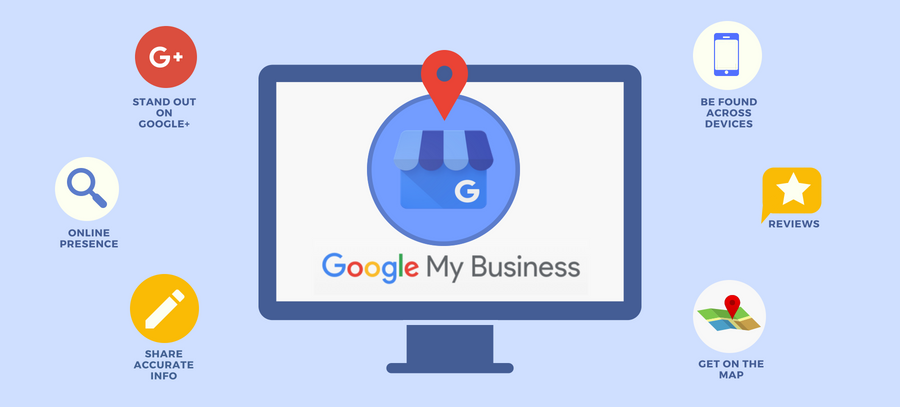
For those who aren’t familiar with Google My Business, allow us to briefly explain what exactly it is. Basically GMB is a tool that’s provided by Google (for free) to help business owners out. It allows you to set up a profile that shows the following:
- Name
- Address
- Hours of operation
- Website link
- Phone number
All of this appears in relevant search results such as Google’s Local Map Pack, Local Finder, as well as organic rankings. This is why experts always recommend that your first step in any SEO strategy is to claim then verify your business’s GMB listing. This way whenever someone searches for your business on Google, the info you plugged into GMB shows up in the search results.
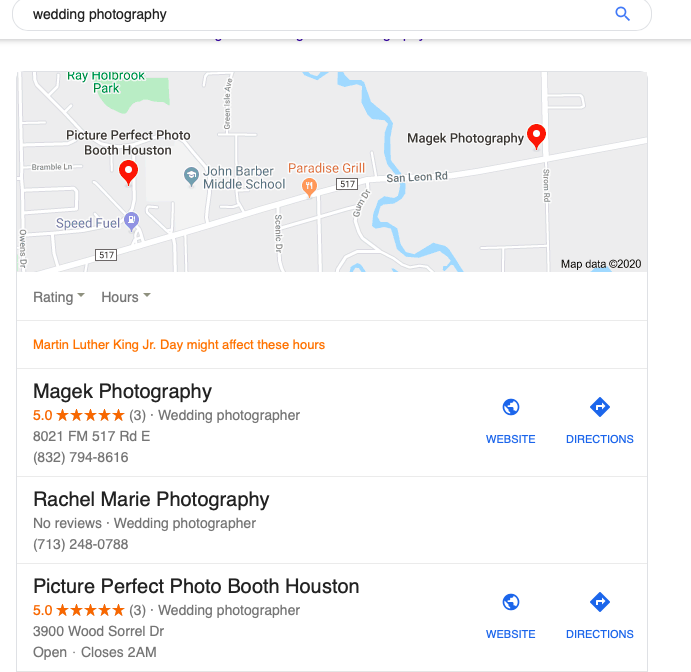
Obviously giving users who are looking you up this information is highly beneficial to you and your business.
As you can see from the Google search, companies website, directions, address, phone number, and business hours appear right on the front page. This means that your audience won’t have to dig around for this kind of information when you show up on Google.
Where does all of this Info Appear?
So you can tell from the screenshot above that your info will appear on Google’s search results (provided the right string is plugged in). But where else does this information show up at?
Google’s Sidebar
Google’s Sidebar, also known as the “knowledge panel’ is where your info may also show up at if someone searches for your business by its name. Google’s Sidebar.
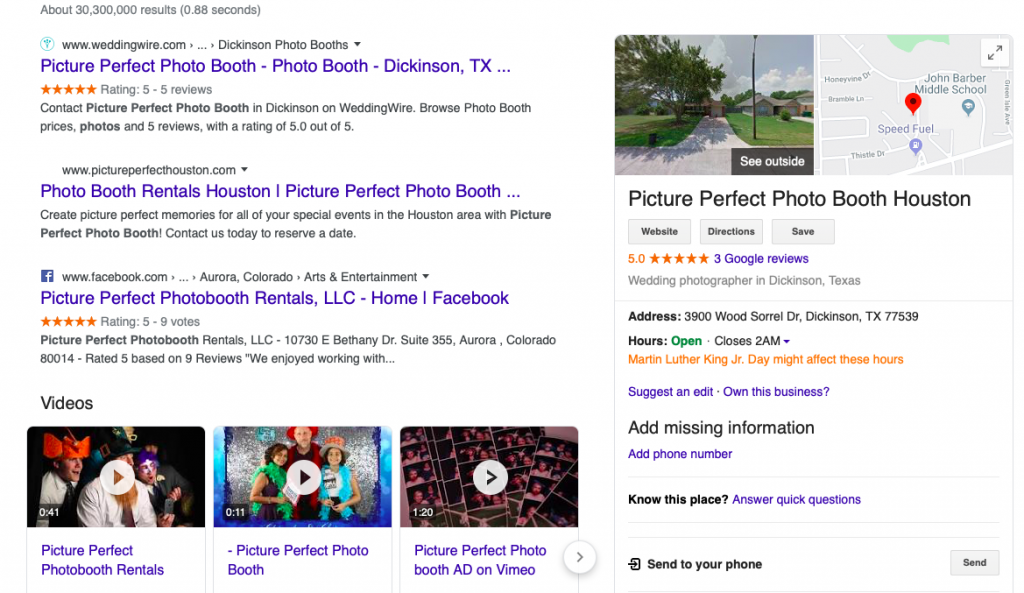
As you can see, all of your business’s information is displayed front and center for users searching for you. They have access to pretty much all of your important info without having to dig for it. Convenient, right?
But what if they’re searching for you on their mobile device?
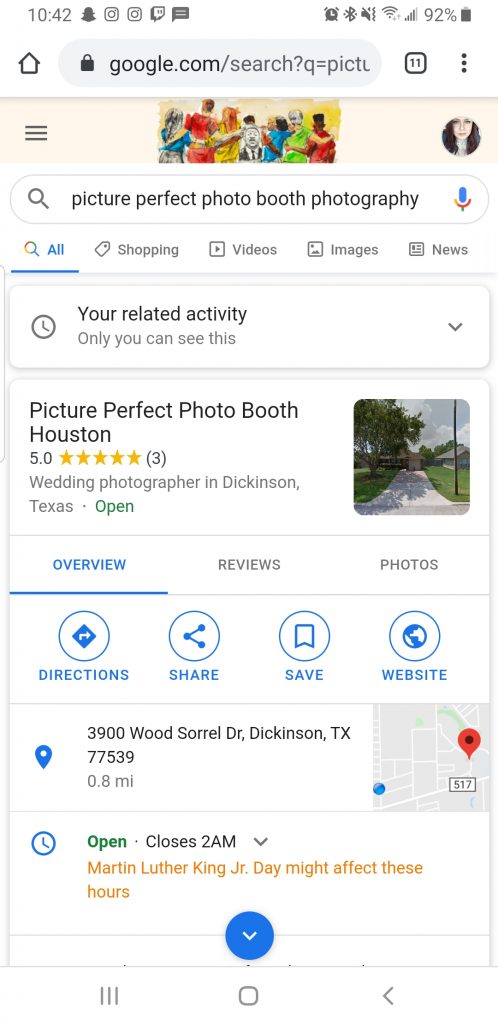
Well, it appears at the top rather than the side.
Local Results
Local results is another section of Google’s search and inquiries here will show the top three business that are closest to the location used in the search. Your business’s info might also show up in local results if someone searches keywords that are associated with your company. Check out my search below. You’ll notice that you can easily see their address, description, reviews, etc. all thanks to their GMB page:
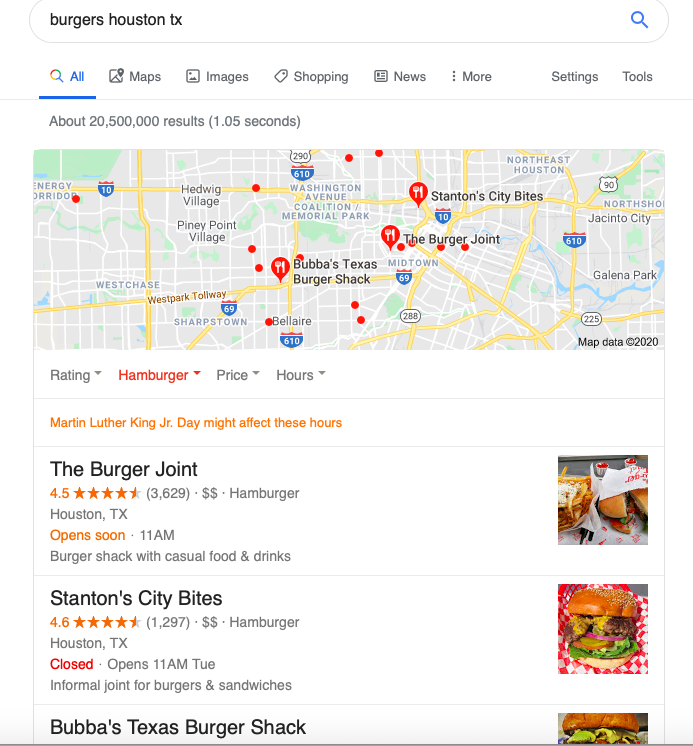
If someone is looking around Google results through their phone, they’ll see the following:
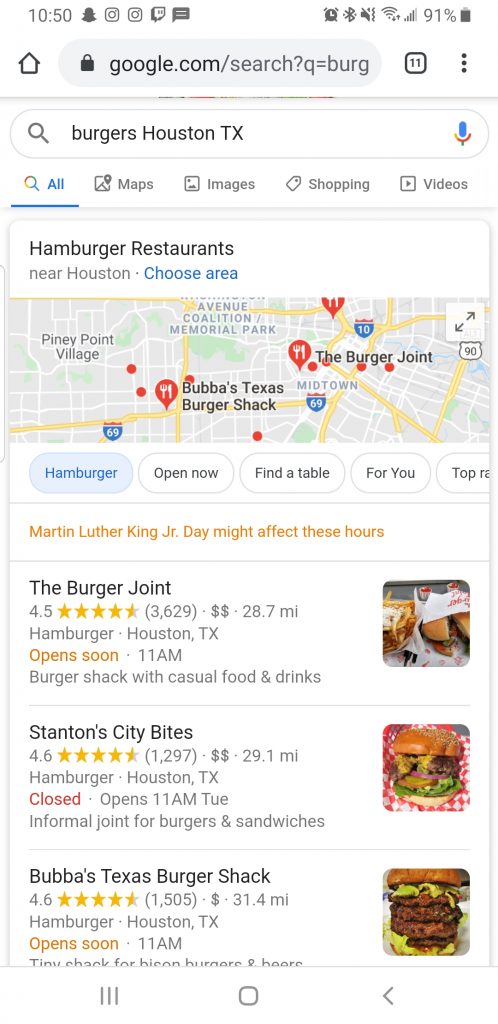
So basically, the same just changed slightly to fit the phone’s display. Google still pulls from GMB but instead of the address, it shows how far it is from your current location.
Google Maps
Since you’ve put in your address, obviously your business is going to show up on Google Maps.
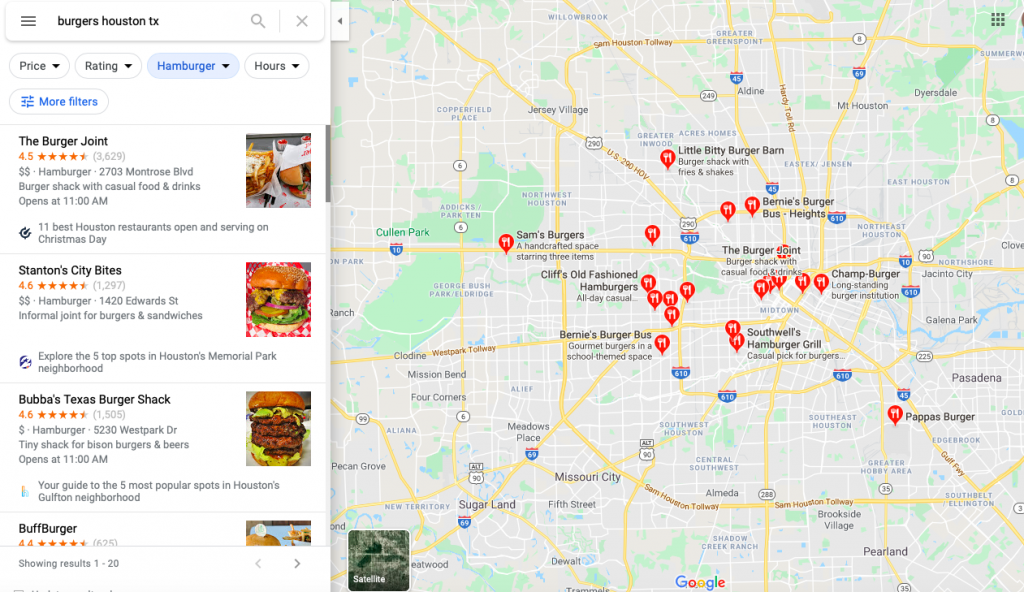
Something to keep in mind here:
Every single result for “burgers houston tx” has “burgers” listed as their particular category. This is extremely important! If you don’t claim your business and then list a specific category on your GMB page that explains what your business is all about, Google is going to have a hard time knowing whether or not your business matches the search terms used. So even if you’re the best burger spot in Houston, Google isn’t going to know if you haven’t put your business in that category. This same info carries over to Google Maps access via mobile devices.
It’s pretty obvious that each burger joint has all of their info displayed: address, reviews, description, pics, hours of operation, etc. And if someone is searching for a particular type of business on their phone or desktop, especially in the maps section, then it’s pretty reasonable to assume they’re looking to visit really soon. Because of this, you want to make sure that not only is your GMB info completely filled out, but also accurate. Don’t put down a fake address or phone number just to flesh out your profile.
Make sure You Review and Verify Your GMB
By now it should be pretty obvious that GMB determines just how your info will show up on Google’s results. It’s also pretty obvious that people searching for you or similar businesses are going to take advantage of all of the information you provide. This is why it’s so important to make sure that every detail is filled out… accurately. As I mentioned, don’t just fluff your page with fake information for the sake of having it appear full. Users that try to locate your storefront via the fake address or call the phony number aren’t going to be happy. If you don’t have a physical storefront, don’t list one. If you don’t have a number, consider getting a business line for customers.
The verification process is pretty simple. You’ll receive a postcard containing a code you’ll need for verification purposes at the address provided. Once you get the postcard, you’ll put the code into your GMB page in order to formally verify it. This means you’ll start showing up in search results and you’ll be able to access reviews and insights regarding your profile. If you don’t have a physical location or a mailbox, you can use your home address. For spam reasons, they won’t allow you to put in a P.O. box as your address.
Don’t worry though, Google will not make your home address available to the public. You need to mark that you don’t receive customers at this location in order for that to take effect though, but the process is simple.
Why You Should Give a Sh!T about Reviews
Hopefully you realize that reviews are crucial to your business and your business’s success. You should also be encouraging your customers to leave reviews. Here’s why:
- Google uses reviews as ranking method for figuring out where to place you in the search results. The more reviews you have, the more authority and importance Google perceives you to have. Even if the reviews aren’t overwhelmingly positive and are mostly neutral, they’ll still push you closer to the top of the results.
- In a survey conducted, a staggering 88% of customers said that they trust online reviews just as much as they trust personal recommendations. So if your business has zero or all bad reviews, you’re going to feel the effects
Moz’s Local Search Ranking Factors Survey found that online reviews make up around 10% of how Google as well as other search engines determine how to rank search results. Below is a chart Moz has provided to break down the variables in an easy to digest way:

What about Negative Reviews?
The first rule about negative feedback is to not take it too personally. Remember that nobody, including yourself, is perfect. You’re going to make mistakes and you’re going to make customers unhappy. This is how we learn what to do as well as what not to do. And at the end of the day, you can use this information to better both yourself and your business. Keep in mind also that nobody and no business is immune to negative reviews.
So how do you deal with them? Well, you need to respond as quickly (and professionally as possible). You also need to acknowledge the problem. Also, put it out there that they can contact you directly in an effort to make things right. This tells other customers (as well as this one) that you’re committed to the quality of work and services you provide. It also tells them that you’re willing to make things right.
Need more advice? Check out our blog post on How to Deal with Negative Feedback: https://beahero.agency/dealing-with-negative-feedback/

As you can see from the graphic, most of these are “how to’s”. They help address a problem that your audience is having and then offer a solution. These types of posts tend to get the most clicks and feedback.
Don’t fall into the clickbait trap though of making blog posts like “Savvy Ways to Boost Your Website’s Traffic- You Won’t Believe #10!” Not only does your audience hate these types of posts, but Google does too. They used to be the status quo but then the Internet became oversaturated with them… And people stopped clicking.
Keep it simple and to the point: “10 Savvy Ways to Boost Your Website’s Traffic.” This way your audience knows exactly what to expect from your post.

Welcome to the new year and the new decade! Each year holds unlimited opportunities for business owners and this one is no different. Well, it sort of is! Instead of 365 days to make the most of, you’re getting 366 since it’s a leap year. Cheers! And regardless of whether you’re just now dipping your toes in the water or you’re a full time vet, there’s bound to be some great opportunities coming your way.
As per usual, we’re going to focus on tips for newbie entrepreneurs though I’m sure even the most seasoned of veterans can find some gems in here. So let’s kick off the New Year right and don’t forget that we’re also here to help you along the way! No goal is too big or too small for Be a Hero Agency. 🙂
1. Pick the right niche for you

We’ve covered this one a lot and for good reason. It’s on the of the most important aspects of starting your own business. You can read a more in depth look at the topic here but we’ll give you a general overview.
Picking a niche is where a lot of people tend to make mistakes. It can be easy to pick something that’s too broad in terms of a general business. It might seem like a good idea at first, but chances are you’re going to struggle to figure out exactly who your audience is. For example, let’s say that you’re interested in producing an all-natural, organic shampoo and conditioner that’s super good for hair. It’s a good idea for sure and you’re bound to get business, but it’s very broad. Anyone with hair could potentially benefit from your product and it can be difficult to create ads and marketing strats around this. Now if you design your product to benefit people with thin, dry hair that needs extra TLC, then you’ll be able to easily identify your audience and market effectively to them.
Now on the other hand, if you’re too specific with your shampoo and conditioner line, then you’ll probably discover that your niche is far too narrow. For example, let’s say that you design your products to benefit people whose hair is thinning, then you’re eliminating a lot of clients. There are a ton of buyers out there who will benefit from a shampoo and conditioner that treats thinning hair, but that’s the only group that you can sell your products to.
You also want to avoid centering your niche around seasons. What do I mean by this? Well, let’s say that Christmas is your absolute favorite holiday. You also know how popular decorations and Christmas items can be during this time of year. Wrapping paper, bows, gift bags, decor, etc. flies off the shelves and people are often willing to pay a premium for these products. It seems like a solid niche to get into right? Wrong. You’ll do a killing close to Christmas, but you’re going to struggle to find clients come spring.
Another tip to consider is that you want to be able to remarket your products to customers. In the shampoo and conditioner line, people will continue to come back. Even after they’ve worked out their hair issues, they’ll probably still opt for your nutrient rich products. Now if your niche is luxe maternity clothing, then your remarket value plummets. Women are only pregnant for nine months. Once she gives birth, she’s not going to be in need of your products anymore. While she might get pregnant again, you’re once again in that small cycle of need then not need after 9 months.
You can also take advantage of Google Trends, which will show you how stable and popular particular niches are. Make sure that your niche is something that’s popular in terms of search results like fashion, fitness, beauty, home decor, etc.
2. Rome wasn’t built in a day & your business shouldn’t be either

Did you know that the Roman Colosseum is 949 years old? And despite its age it’s still largely in tact. Candidly speaking, the Colosseum has faired better than some of our modern buildings. That’s because the material used is better and stronger than any concrete that’s used today. The Romans took their time with the construction, making sure that they used only the finest materials, used rare luxury marble imported from other countries, and designed the building to withstand the tests of time. Are you catching our drift?
It can be tempting to launch your business ASAP. After all, you’ve got a great idea, awesome products, and you’re excited to share them with the world. Unfortunately, this type of build is very short-term. Sure, you’ll rake in some profit and you’ll probably do so fairly quick. However, you should be focused on something that’s going to last for years to come. This means spending time:
- Researching your niche
- Researching your competition
- Learning the ins and outs of your market
- Building an attractive, content rich website
- Focusing down your SEO
- Figuring your audience
- Planning for the future
Concentrate on building not only a quality business, but a business with a legacy. How? By doing what you do so often and so well that you do it far better than any of your competitors. So take a page out of the Roman’s books when crafting your own business.
3. Solve a problem

The best (and most profitable) businesses come from offering a solution to a major problem. And in fact if you looked at the bulk of businesses that failed and asked the owners what problem their company solved, the wouldn’t be able to tell you… Or the problem they addressed wasn’t significant enough.
This isn’t to say that you need to create a business that cures cancer or comes up with a cure for a disease, but you do need something that helps people overcome a problem. Reflecting back on the hair product line, your shampoos and conditioners address a pretty significant problem: hair that needs some extra TLC. Dry, damaged hair that’s a product of genes, dye jobs, or too much heat styling is a pretty big issue.
Also by knowing exactly what problem you’re setting out to solve, you can work your marketing strats in a way to educate customers on how your products can help. And more than that, how your products can help more than your competitors’.
4. Focus on profit, not revenue
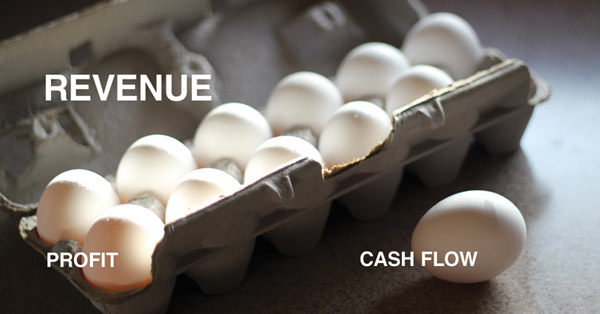
It’s easy to get caught up with revenue and become obsessed.
You know those people who are always shouting, “in 9 months, I made 6 figures!” Yeah, we all know them or we’ve seen their ads. And in the back of our minds, we’re asking “did you really make that much though?” And chances are, they didn’t.
So let’s say that those six figures total out to $700,000. In 9 months, the business owner has had that number come across their board. It’s impressive to say the least, but you might be wondering how much they actually got to keep… And if that number is $10,000 you might also be asking whether or not it was worth all of the hard work to make that. You might also question whether or not it’s sustainable. The answer? Probably not.
So instead of focusing on revenue, focus instead on profit. The more profit you have, the more money you can reinvest in aspects of your business such as employees, marketing, success, etc. And as an entrepreneur, you’re going to be paid last. Your startup expenses should get the first check. You’ll also want to make sure that you have enough money to treat yourself too, though.
Need help? Oberlo’s has a free tool called Profit Margin Calculator that can help you earn a profit.
5. Become obsessed with your customer’s needs

Unmet needs is one of the biggest sources of conflict in business. If a customer isn’t getting the product or service that they expected (or were promised), then their needs aren’t met, and they’ll feel angry and frustrated. Because of this, one of the most important business tips we can offer in regards to managing customer relationships is to always empathize with the customer.
This isn’t to say that you need to pander to rude, impossible to please customers, but you should focus on helping your customers solve their problems. And if your products aren’t meeting their expectations, see what you can do to make that happen.
When you start looking at your customer’s frustration as pain from not having their problem solved/needs met, it can be easier to relate. And it becomes easier to not take the insults/rudeness personally. Now you’re free to focus on what they’re really trying to say. And by doing so, you can come to a resolution that works for both of you. This also means that instead of giving a refund and taking the easy way out, you’re establishing trust and building a long-term relationship. Many business owners are quick to just cut their losses and in some cases, this might be best but you should always see if there’s a resolution before closing the door. Remember that word of mouth is one of your best friends and if you can get this difficult client on your side, they might spread the good work.
Check out Nonviolent Communication: A Language of Life by Marshall B. Rosenberg, PhD for more tips on how to do this.
6. Concern yourself with employee morale

Your employees are the backbone of your business! And a happy employee will not only work harder for you, but they’ll also work harder for your customers. Think about the last time you dropped by a restaurant and your waiter was rude. They forgot your drink, were short with you, and just didn’t seem to care at all. It probably made your experience a lot less pleasurable and perhaps if it was bad enough, you didn’t want to come back. Now think about a waiter that you had that was very friendly, outgoing and helpful. They were always on top of things and offered great conversation. You enjoyed your meal and you’re far more likely to come back. My point? If your employees are treated well, they’ll reflect that attitude towards your customers and your business will benefit from it.
Most entrepreneurs get caught in trying to act like a boss. And trust me, no employee wants to deal with that. They want to feel appreciated, valued, and like they’re part of your business rather than just an asset that can easily be replaced. If you’re constantly criticizing your employees for not doing things “your way”, you’ll find that their performance will drop.
7. Start off with a narrow focus then expand from there

It can be tempting to dream big and try to expand right off the bat, but you need to start off slow. Take Amazon for example. They started off as an online bookstore. Once they started attracting a lot of attention and business, they began to slowly expand by offering toys and other products. As time went on, they continued to add new products until they became the global empire that they are now. This is how you build a business in general. And it should also be part of your small business manual.
Start with a narrow focus in the beginning then slowly broaden your horizons. By starting off narrow, you can establish a loyal and devoted customer base who knows what to expect from you. It also makes your marketing campaigns easier as we mentioned earlier.
Let’s go back to your shampoo and conditioner line. As your business grows, perhaps you start adding other products like leave in conditioners, straightening creams, hair masks/treatments, oils, etc. You can even dip your toes into the body product line by offering soothing shower gels and soaps that cater to sensitive, dry skin. It vibes well with your business niche already and customers won’t be completely caught off guard when you start offering new products. Dream big, but don’t expand early; you need to have a big audience and loyal customers first. There should also be a demand for the other products.
8. Keep an eye on your competition

As a small business owner, it can be easy to get wrapped up in your own little world and forget about your competitors. Your competition might not even be on your radar unless they’re trying to knock you down a peg so they can take the top. However, you shouldn’t wait until that you feel that first slip of the knife into the back to keep in eye on your competition.
This isn’t to say that you should obsess over what they’re doing and when they’re doing it, but you should be aware of the following:
- What products and services they’re offering
- Their marketing game
- Their price points (especially in comparison to your own)
- How they treat their clients
- New and upcoming services/products
Ideally you’ll want to figure these things out in the early stages so you know how to effectively compete against them. If you realize that they have a great product but their customer support absolutely sucks, capitalize on this. Focus more of your energy on customer relations to give you a leg up. The goal here is to figure out what their weaknesses are and then make it your strength while still offering a great collection of products/services.
9. Pick a business that matches your personality

Many people get caught up in a product/market fit scheme. They want to make sure that their product fits the market and that’s about as far as they go. This will definitely lead you down the path to success, but Naval Ravikant takes it a step further:
Founder – Product – Market
All 3 of these should fit together seamlessly. Basically, no one could run that business better than you because all of the above is a perfect match. Picking a niche that fits your skills, personality, experiences, and passions will get you far. Customers can tell when you’re passionate about what you do and if you love what you’re doing, then your profits will reflect that.
10. Don’t get wrapped up in perfection

The best piece of advice we can leave you with is to not get wrapped up in perfection. Your business will have kinks and that’s okay. Do your best and the rest will fall into place.
And if you’re struggling to take those first steps? Follow Nike’s slogan: just do it. And we don’t mean just launching your business. Take a step out of your own head and just do it. Stop questioning whether or not this is the right move to make and give it a go. You’ll make mistakes as you go, but these will only help to improve your business. There will definitely be challenges but you’ll learn how to jump high enough to clear them.
Entrepreneurship is about going all in.
It’s about taking risks and jumping into water that you don’t know the depth of. Your goal isn’t to win an award for perfection, but rather your goal is build a business that helps people find a solution to their problems.
As small business owners, we’re always looking for new ways of attracting clients and building our brand/business. And to be honest, there’s never a bad time to think about marketing ideas. Being engaged in your brand, clients, products, and doing your best to improve those areas is one of the best things that you can do to boost your sales.
Focusing on areas that aren’t performing well is also another key to success. Maybe you’re not getting enough feedback on your messages like you have in the past. Perhaps you’re not meeting your “new client” target goals anymore. Or maybe you feel like your business seems to be stagnant. So how do you optimize your business again and make it feel exciting again? Well, whether you’re brand new to the world of small business or an established veteran, there are plenty of marketing ideas and tips out there that will help.
And even if your business is chugging along at full speed, these tips will also help you keep your brand and company fresh and engaging.
1. Establish a Cleaning Schedule

No, I’m not talking about sweeping and dusting your brick or mortar (or desk area if you’re working from home). While you should be doing that already, what I’m talking about is data cleaning.
Chances are you’re probably already practicing this… But the problem is that you’re likely only cleaning that data once a year. And while that’s definitely a good start (cleaning once a year is better than never at all), it should be something that you do far more often. And in fact if you’ve been neglecting your database cleaning duties, your marketing strategy may be suffering.
“According to studies, 72% of companies feel that data quality issues directly effect both consumer perception of their business as well as trust.” That’s a pretty significant number obviously.
Also in the same study, about 44% of companies trust their own data enough to make decisions regarding their business. That’s definitely a lost opportunity.
But how does being lazy with data cleaning affect decision making? Well, when you think about it the answer becomes pretty obvious. Successful marketing strategies should come from your data.
Consider this:
You’re looking at your data and according to it, email marketing has been incredibly successful for you. 20% of your clients come from this. So given the data, you should invest more in email marketing. Simple, right? But if your data is old you might be getting inaccurate information and thus be spending money in areas that aren’t profitable. Cleaning out old data and looking at current numbers may reveal something completely different. Perhaps social media presence is now where 20% of your clients but you’d never know unless you’re purging old data. And if you’re trusting that old data, you’re funneling money into something that isn’t really benefitting you anymore.
So the moral of the story? Clean your data monthly!
2. Understand Your Audience

When it comes to crafting marketing ideas that will be successful for your small business, you need to think extensively about your audience.
Before you invest in any type of marketing, ask yourself these questions:
- Who is your audience?
- What does your audience do?
- How can you help them do that better?
By now you should know that your products/services aren’t for everyone. There are people out that simply won’t benefit from what you’re selling. And there’s nothing wrong with that. But you shouldn’t spend money or time marketing to the people that don’t fit what you’re offering. This is why it’s important to identify your audience.
Perhaps your product is an all-natural weight loss supplement for women for over 30. Sure, you could in theory market this product to younger women, but it’s not really meant for them. And honestly, you’d be wasting valuable resources trying to sell your product to them. So identify for your audience (who your products are really for) and center your marketing around them.
You also need to consider what your audience does for a living. 30+ women who are working a 40 hour week with little time (and desire) to exercise will definitely benefit from your supplement. But women in this same age demographic who are working from home or are more active won’t get the same benefits from your product. Assuming of course this supplement is designed to replace the need for a heavy workout routine. Now if the opposite is true and it’s meant to boost their workouts, then the latter demographic is who you need to target. Make sense?
Now obviously your supplement can help them depending on what demographic your product is designed for.
But what if you’re not selling a product but rather a service? Well, the same info still applies. Say you’re a freelance writer. Well, your audience will be those who need content written, their websites edited, blogs managed, etc. And those are the people that you should focus on selling your services to. Small personal bloggers won’t benefit from your services; they’re already managing their own blogs. But those seeking ghostwriters or looking to expand their blogs with more content will benefit from what you’re peddling. Those who aren’t very good at writing or whose first language isn’t English will also benefit from your skills. You can take their content and make it better. Make sense? 🙂
Simply put, buyer personas are going to be instrumental in defining who your audience is; especially in regards of interests, demographics, jobs, responsibilities, needs, etc. If you’re able to accurately identify for your audience, you can easily figure out your target and a direction to take both your business products and your marketing strategies.
“Also, don’t neglect taking a funnel position into consideration when you’re coming up with buyer personas. You need to tailor your messages in a way to account for different personas. For example, a customer that requires a more nurturing touch will benefit from a message that’s different from someone who is ready to buy your products. You need to have conversations at the appropriate times to be sure that you aren’t arriving too late, too soon, and you’re giving them what they need.
3. Keep Your Content on Target

When you understand your audience, it’s a lot easier to come up with content that is relevant and valuable. As stated, you shouldn’t be publishing content just to fill spaces or come off as someone who has a lot to say. If your business is dedicated to helping people travel for cheap, then focus your content on that topic and around it. Don’t publish stuff like “10 of the Most Expensive Suites to Stay in Around the World”. Sure, it’s travel related but your company is about saving money, not spending it on lavish travel accommodations. In other words, stay in your lane!
Let’s also take a moment to talk about clickbait and sales pitches. These things are EVERYWHERE; especially clickbait. “10 Ways to Lose Weight without Dieting; You Won’t Believe how Easy #5 is!” These were really popular methods of marketing and getting views on posts, but they’ve become cliche and hated. Clickbait and sales pitches aren’t going to get you more views and they’re definitely not good at establishing trust between you and your audience.
So how do you rope customers in if you’re not trying to sell them or appealing to their curiosity through clickbait? By appealing to them on a more personal level. You want to show potential clients that you not only understand them as individuals, but that you care about their wants and needs. So instead of constantly pushing your product (if it’s good, it’ll stand on its own merit), focus instead of providing information, valuable insights, and even entertainment to your audience. Even though you’re not actively putting your products front and center, this is a much more effective way of leading potential clients down the path to your buying what you’re selling.
Want to know more about how content marketing helps your business? Check out this link!
4. Optimize Your Emails!

A lot of people feel like they get far too many emails and far too much spam. And based on your own experiences, you probably feel the same about your own inbox. Chances are you’re tired of getting all of those wonky emails that say things like “[Your Name or Email] click here for more information!” “[Your Name or Email] click here for savings!” “We received your request [Your Name or Email] and we’re happy to have you on board!” In other words, we’re all tired of spam.
But there’s a big difference between those emails and sending out emails about the latest regarding your business/products. Did you know that 86% of consumers prefer email when it comes to business communications? And did you know that most of those also like to know what’s up with your business? Think about the emails you get from your favorite clothing brand. Sometimes they send emails letting you know about new products and other times it’s regarding deals they’re offering. Personally speaking from a consumer standpoint, I love those emails! They’re pretty infrequent and they’re a good way of helping me keep up with what’s going on with a company I like. And chances are you feel the same. So, why wouldn’t your clients appreciate the same?
Email marketing can be incredibly tricky though. You want to avoid spamming your clients but you also want to keep them up to date. You also want to provide great content such as newsletters or articles that are helpful, but just because it’s well written and valuable doesn’t necessarily mean that they’re going to open the email. However, the chance that some won’t open your email isn’t a reason to quit email marketing or shy away from it.
There are a lot of tips out there for email marketing, but I’ll cover some quickly:
- Do weekly or biweekly emails; never daily
- Don’t be pushy in your emails or over the top with sales pitches
- Respect your client’s inbox: use it for updates and helpful content, not spam
- Keep the emails short and sweet: 1000 words or less. Nobody wants to spend time reading a novel
- If you want to offer them more info, provide a link to your content page so they can read it at their own discretion
Outbound Engine is a great email marketing source if you need more help.
5. Social Media is Your Friend
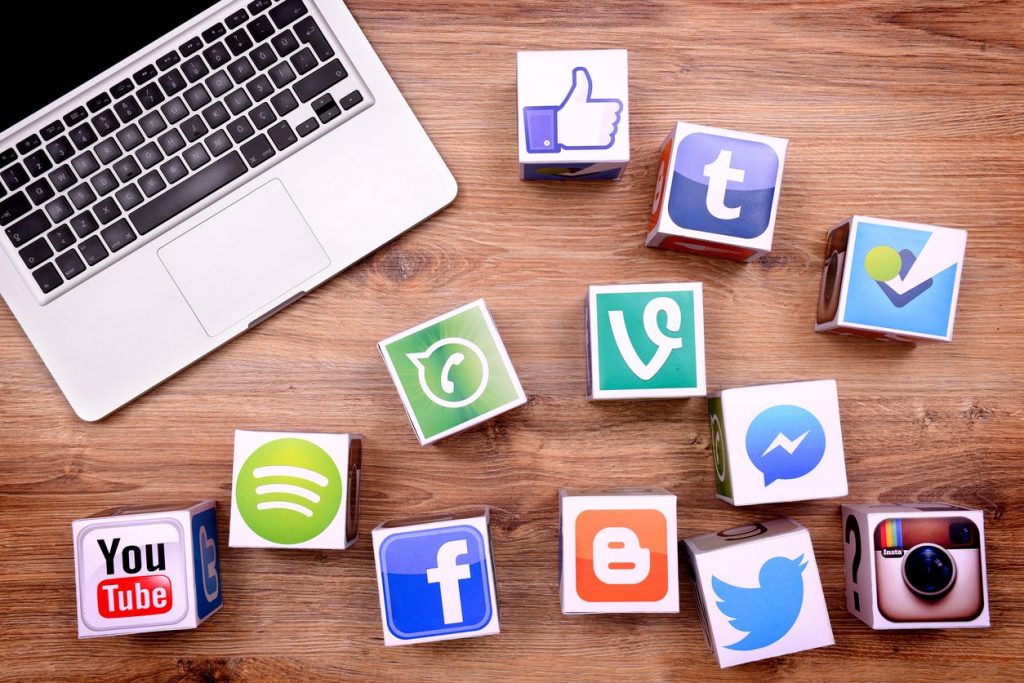
Social media has become the “it” thing over the last couple of years when it comes to marketing products/businesses. There are so many people on social media platforms and it’s easy to reach mass amounts of people with very little effort on your end. These platforms also provide a lot of networking potentials.
However, the algorithms of social media are always changing and it can be a headache to keep up with the newest trends/changes. And obviously, a lot of these updates make it harder for businesses to gain footholds organically. For example, hashtags on Instagram used to be all you need to attract business. You use the right hashtags (and enough of them) and you’re golden. Now, Instagram has changed the importance and impact of this trend. Thus, it’s harder to reach new clients on this platform using hashtags alone. So what’s a business owner to do?
Well, this where paid advertisements and boosted posts come into play. Sorry folks, but you gotta spend money to make money and that’s not changing anytime soon!
But how effective is this paid advertisement exactly and is it worth it? The short answer is that it’s very effective and it’s definitely worth. According to research, paid ads are predicated to generate over $18 billion in revenue in 2019. That’s huge! Especially considering the fact that you really don’t need to shell out a fortune to get your content seen. Almost every platform offers a variety of advertisement and boost packages so you can pick the one that best fits your budget.
Need more convincing? In 2016, 76 percent of B2C content marketers in North America took advantage of promotion tools/posts. 61% reported that their posts were effective. Social advertisements ranked a bit lower, with 74% of the content marketers taking advantage of them. 59% reported that they were effective.
These are really, really good numbers obviously.
If you need a quick, dirty guide to introduce you to the “pay to play” world of social advertising, check out these links:
6. Visual Marketing is the Future
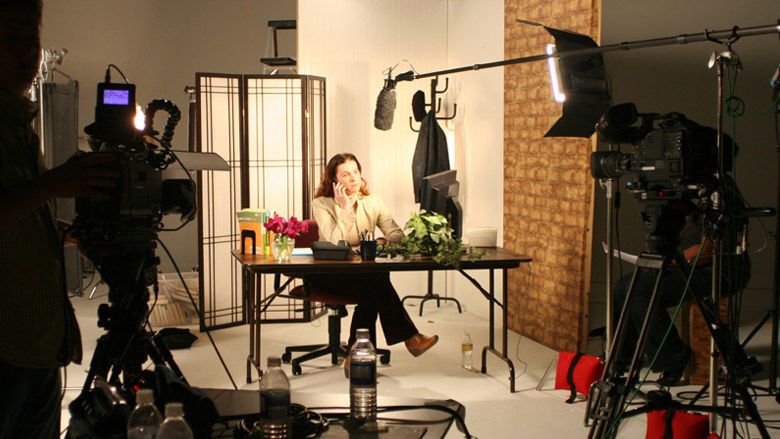
You know the saying “a picture is worth a thousand words?” Well, it’s true! Visual content is one of the fastest growing trends and as each year passes, it continues to grow in popularity. Think back a few years to Facebook and Instagram. Facebook was all about statuses and moods. It was all words. Instagram was in its infancy and nobody really used it. Fast forward and now Facebook no longer centers around words; instead, memes, images, and videos are shared across the board. And Instagram now stands with Facebook in popularity ranks.
Did you know that the human brain processes images 60 times faster than words? This is one of the reasons why images and videos are so popular right now. There’s also the fact that they’re more attractive, engaging and you can fit a lot more information into a “smaller space” using videos/images than you can a lengthy article. And honestly, not everyone has the time (or desire) to sit down and read a 2000-3000 word post. But if you condense the highlights into a 5 minute video, well, suddenly there’s time. And arguably it’s more interesting.
So if you’re looking for marketing ideas, look into visual content; especially video content.
Snapchat, Instagram Stories, Facebook Live, Facebook Stories, and YouTube are growing rapidly in popularity. And customers are eating it up. They like the fact that they can see the “face behind the business” in video and that they can also easily digest a lot of information without staring at a white wall of black text.
Interested in starting your first video? Cool! Here’s a few tips:
- Keep it under 2 minutes
- Give a quick introduction about yourself
- Make it informative, but engaging
- Consider adding captions to your videos instead of focusing solely on audio (around 85% of videos are watched without sound)
It might feel weird adding text to your videos, but think about how many people are scrolling through social media when they come across a video. Many just watch it on the smaller preview screen instead of actually clicking the video so it’s silent. Others are at work, traveling, or somewhere where it’s not easy to watch the video with the sound on.
Did you know that Hubspot found that 72% of people prefer video when it comes to learning about a product/service/business? Well, you do now so take advantage of this info!
TLDR; visual content is in and that’s not changing anytime soon.
7. Don’t Neglect Your Reviews

You probably know that consumers have a lot of power when it comes to their online reviews. More and more people are looking at reviews before purchasing a product, visiting a store/restaurant, etc. We all value the opinions of others as consumers so these reviews become incredibly important.
The importance of reviews and the thought of negative feedback can be overwhelming; especially when the reviews are just plain nasty. However, they’re incredibly valuable and even the nasty ones can offer some valuable insights.
If you haven’t already, check out our post on dealing with negative reviews. In this post, we talk about how to deal with negative reviews as well as clients who just can’t be satisfied.
As a final piece of advice, make sure that you’re not only checking your online reviews often, but that you’re also asking consumers for them as well. Even if a product is really, really good many of us forget to leave our reviews about the place online. A gentle reminder is all your clients need.
Bonus Tip: Automate what You Can

In the beginning, it might be easy for you to do everything organically/by hand/by yourself. But as your business grows and as you expand your reach to multiple other platforms, it can be difficult to keep up.
It can also eat away at your time and you may find yourself investing far more attention in marketing your business than you are in actually running it.
Thus, I recommend automating what you can.
Recently, we touched a little on this notion. One of the things we focused on in a previous post is undercharging and how it’s not really helping anyone. Because that’s such an easy pitfall to succumb to, we felt that it would be good to talk about undervaluing yourself as well as your business and products.
While undervaluing your business and yourself usually comes from low self-esteem or a lack of confidence, it can also be the result of trying to get clients in the door or prevent them from leaving.
Let’s pretend that…

You’re a new business and you want to succeed. You’ve got a solid staff, your products rock, and you’re ready to change people’s lives! There’s just one problem… Nobody is paying you much attention. So what do you do?
At this point, you’re probably tempted to start throwing up some discounts. People are noticing you but they’re not buying from you. Or perhaps clients are checking out your products but walking away from the digital shopping cart without entering their credit card info. So you start luring them back in with the discount red carpet. And while this can definitely get people in the door, you can undervalue both yourself and your products if you’re not careful.
Not all discounts are bad discounts…
Once again, offering discounts or incentives to attract new customers is a great marketing strategy. We’re not chastising ANYONE who does this. What we are cautioning you against is undervaluing your products and essentially “giving away your business for free.” As we’ve discussed before, if you’re offering too heavy or discounts or offering them too frequently, you’re going to attract the wrong kind of clients.
You’re also going to put an unattractive label on your business that tells potential clients that your services really aren’t worth the price tag. Plus you’re conditioning customers to walk away or demand higher discounts for your services. So if you’re offering a discount or a freebie, offer something low and stick to your guns. If you’re offering 10% off to new customers, stick with it. Don’t let them bully you into any higher percent.
A happy medium is to offer new customers 10-20% off their first purchase or a “freebie” such as a 10 minute consultation. You can also take advantage of holidays such as Cyber Monday and Black Friday to offer discounts or a small freebie. Just remember that you’re here to make money, not give your business away! 🙂
What Exactly Does Undervaluing Yourself & Your Products Cost You?

The short answer is everything.
Undervaluing yourself (as well as your products/business) can cost you:
- Your business
- Your self-esteem
- Your clients
- Your bank account
- Your confidence
- Your mental health
And that’s just the tip of the iceberg really. Let’s break it down a bit further:
1. Undervaluing Can Cost You Professionally
As we’ve already implied, undervaluing your products can cost you professionally. If you’re offering severe discounts (think 50-75% off) or frequently (all a customer has to do is send an email to get a higher discount), then you’re losing money. Duh 🙂
You’re also losing out on clients that will pay you what you’re worth. Word travels fast and if customers see you giving away your products or offering discounts, they might start wondering if your services are actually worth anything. If they were worth their salt so to speak, wouldn’t you charge full price?
Try to think of it from a client’s perspective. Let’s pretend that you’re shopping for a bracelet for your wife. You have a good idea of what you want in mind. You come across two different shops:
Shop A has the bracelet for $150. The retailers are very helpful and knowledgeable. They answer all the questions you have regarding the product and assure you that it’s the highest quality. As you look the product over, you do notice that it looks and feels great in your hands. It’s definitely a quality piece.
Shop B has the bracelet for $50. The retailers are still pretty helpful, but they’re kind of shady when it comes to answering questions. And chances are, you’re probably wondering why Shop B has the bracelet for $100 less. You might also be wondering what’s wrong with the product. If they can offer it for so cheap, then it’s gotta be flawed right?
Chances are, you probably went with Shop A. Even though Shop B was much cheaper, you probably couldn’t shake the feeling that you were getting the raw end of a deal. This is what customers see when you’re undervaluing your business and products.
2. Undervaluing Costs You Financially
This is a pretty obvious one. If you’re charging what Shop B is for the same bracelet, then you’re losing out on money. Shop A is making an extra $100 off their bracelets.
Let’s say that you’re Shop B and you sell 10 bracelets. You’ve made $500 off your products, congrats!
Shop A only sells 5 bracelets to your 10. You’re probably feeling pretty good here until you realize that Shop A made $750 off their bracelets. Sure, they sold less but they made quite a bit more than you… And they didn’t have to undervalue their products to do so.
Now as Shop B you’re stuck with this price point or one that’s close to it. Since you’ve primed your customers for huge discounts, they probably aren’t going to give you what you want if you try to raise your prices at any point.
The lesson here? “A slow dime is better than a fast nickel.”
3. Undervaluing Costs You Personally
Low self-esteem can cost you a lot.
“People with low self-worth seek constant, bordering on irritating levels of assurance from their partners. That leads to insecurities, and the last thing something as complex as a human relationship needs is one member doubting the other’s commitment because they don’t believe they’re worth being with in the first place.” –https://www.keepinspiring.me/how-to-build-self-confidence-undervaluing-yourself/
In other words, low self-esteem will put a strain on your relationships. Whether they’re professional, romantic, or personal it can have a negative effect on these types of relationships.
Professionally speaking, you might start treating your staff and clients negatively. You may try to cling to clients or come off as needy to potential customers. Obviously these are off-putting behaviors.
4. Undervaluing Costs You Mentally
Undervaluing yourself can lead to low self-esteem and can also lead to depression, anxiety, insomnia, addictive behaviors that are toxic (turning to drugs, alcohol), and more.
That one is pretty obvious right? But what you might be wondering is how does undervaluing your business/products affect you mentally? Well, it can cause you to look at your business or services in a negative light. If you’re Store B charging $50 for your bracelet while Store A charges $150, you might start thinking that there’s something wrong with your bracelet. Sure, it’s the exact same as Store A’s, but you’re charging far less… So it has to be worth less, right? It’s clearly not as good as theirs. And if it was, people would be giving you $150 for it.
This kind of thinking can spiral out of control fast. It can also begin to chew at you mentally from other angles and cause you to question yourself as a person if you’re not careful.
5. Undervaluing Costs You Physically
“When you’re down on yourself, you may even suffer from physical symptoms. There are obvious reasons for that, such as the depression from low self-esteem will cause you to not take care of yourself.” –https://www.keepinspiring.me/how-to-build-self-confidence-undervaluing-yourself/
If you’re undervaluing your products/services or yourself, it can lead you down the road to depression and anxiety. When you’re suffering from these, it can be difficult to take proper care of yourself. You may stress eat or not eat at all. You might also have difficulty sleeping (sleeping too much or not enough) or struggle for motivation. Obviously if you’re suffering from any of this it can be hard to take care of your clients, your business, and your products; especially if you’re struggling to take care of yourself.
“You might even feel physical pains. Chronic joint pain, limb pain, back pain, gastrointestinal problems, tiredness, sleep disturbances, and more kinds of discomfort are closely linked with depression, including the kind of depression that’s a result of having a low opinion of yourself.” –https://www.keepinspiring.me/how-to-build-self-confidence-undervaluing-yourself/
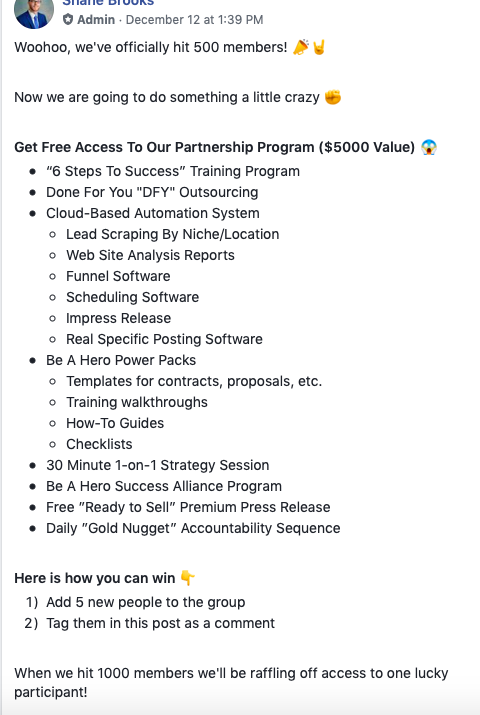
Join the raffle today! If you’re not a member of our Facebook Group, join today: Be a Hero Agency- Secrets to Landing Your First Client

While this rings true for just about everyone, I want to focus on this from the perspective of a small business owner and freelancer…. Especially since this is so very, very relevant to them. And arguably some of the hardest advice to take. But I promise both you and your business will be better off for it.
Chasing people (clients) is one of the things that I was extremely guilty about when I first started… And sometimes I still fall victim to this. It’s also a trend that I’ve seen among other small business owners. You have a potential client and for some reason you just can’t close the deal. Maybe it’s your price point, maybe they like your competitors better, or any number of things that prevent you from luring them in. Our first instinct is to go “all in” in order to get them to buy our products.. Or in my case, get them to let me write their content.
While this isn’t necessarily a bad thing, it can definitely become one fast if you’re not careful.
Pitfalls of Chasing Clients
You come off as unprofessional and appear to lack confidence in your business/products. If you’re chasing clients that have already decided to go elsewhere, not only are you going to get on their nerves but you’re also going to appear VERY unprofessional. You’re also going to give them the impression that you lack confidence in yourself. If your products/business is so good, why do you need to chase them? That’s the impression you’re giving them. Let your business/products speak for itself.
Discounts might be thrown around at this point. Let me preface this by saying that it’s not a bad thing to offer discounts or incentives to get clients in the door. However, if you offer too many discounts (or heavy percentages off) you’re going to attract low-ball customers. These aren’t the clients you want; these guys are only here for the absolute bottom of the barrel pricing. And once you’ve given them that discount, chances are they’re never going to pay full price for your products. After all, if you chased them down after they left to offer discounts, what’s to stop you from doing that again? Don’t teach your clients that this behavior is ok.
Also, word can spread quickly that you’re offering some serious discounts. Once again, attracting people who don’t want to pay what you’re worth. You can also come off as needy and not confident in your skills if you chase clients with discounts trying to get them to sign up. Also, current customers might get upset that they’ve paid a premium when others have gotten a discount. So if you feel you have to offer a discount, offer something small like 10%.
Focusing too much on clients can cause you to lose sight of your dreams/business goals. I’m not saying that you shouldn’t focus on your clients, but you shouldn’t spend your entire day spamming the ones who didn’t want your services. Don’t worry so much about them; keep sight of your dreams and goals.
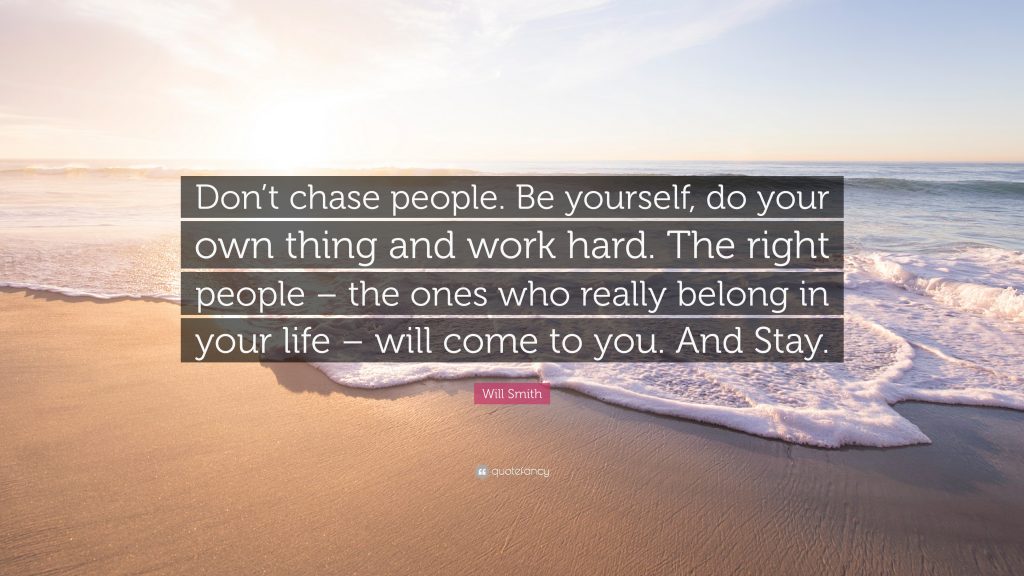
Like the quote above implies your business, services and you as a person will shine through if you put in the work.
You’ll attract the right customers, the ones who want your services (not freebies) if you focus on your business. So instead of investing time in chasing clients down, reinvest that time into you, your business, and products/services. Not only will you be glad that you did, but your clients will too.
We have all made this mistake at some point in the past and many of us are probably still making this mistake without even realizing it.
Maybe you’re a freelancer just starting out and would rather build up your CV or portfolio first… Or maybe you’re running a fledging business and want to undercut the competition to get going and establish a name for yourself in the market. In either case, undercutting isn’t necessarilya bad thing. It can bring clients to your door and get your name out there pretty fast.
However, even if you’re offering deals to get people in the door, there’s a chance that you might still be undercharging. Yikes!

Happier Clients
What you might find surprising is that not only is charging higher prices better for you (in a rather obvious way), but it can actually be better for your clients. Why? Well think about it. Let’s say you’re looking for a wedding photographer. You’ve narrowed it down to two candidates and one is significantlycheaper than the other. You’d think this would be good news for the cheaper photographer, but that’s not necessarily the case. As the client in this example, you’d probably lean towards the higher price one since this is important to you. After all, you’re only going to get one go at the photos for this wedding; you want them to be the best possible. As the client, you probably feel like you’re getting better quality from the more expensive one. And in some cases, this is true.
A huge part of this revolves around perception. For better or for worse, when something is priced higher, it is perceived to be of better quality. It is exactly this phenomenon that leads to what is called “prestige pricing”.
So not only can it be better for your clients, but you will be more likely to land better clients to boot.
Prestige Pricing
Let me give you another example of how this works. I used to know a guy who worked at Nike and was asking him about some of their more “exotically priced” shoes. I had always liked their running shoes, but I also always wondered what was going on with some of their more expensive models. After all, there had to be something ridiculously coolabout them right?
I asked him what the deal was with the prestigious models. What features did they have that my pair didn’t? What would I get out of these? Why would I want to pay more for these? I expectedto hear lots of weird jargon about heel-cushioning, modern materials, and all sorts of sci-fi stuff. I mean, higher price= cooler stuff right?
The answer he gave me took me by complete surprise and taught me a lesson about prestige pricing. He told me that beyond a certain price point, they were all essentially the same and only the price differed (along with some trifling differences like color that did not affect production costs). Naturally, I asked him why Nike did this. He laughed and said,
“Well, if Nike didn’t do it, then Adidas would. And in turn, Adidas would steal that share of the market from us. So, Nike has to beat them to the punch.”
Turns out that even when there is absolutely no difference in quality, people are willing to pay more because the increased price grants a perception of increased quality.
Now you might be thinking that a massive brand like Nike can get away with that sort of skullduggery, and that it does not apply to you. Think again! This is very basic human psychology that is rooted in logic:
The more you pay, the more you get, right?
Even if you think about it at the most basic level, you’ll realize that we all fall prey to this on a daily basis. Imagine you’re out shopping for groceries and you come across two different brands of peanut butter. Sure, you might buy the jar that’s 25 cents cheaper (after all, it’s just peanut butter), but doesn’t a part of you wonder if there is something more to the slightly more expensive one?
At this point it becomes necessary for me to point something out:
This is not some marketing or psychological trick to employ to trick people into paying more.
Yes, there are businesses out there that do take advantage, but that’s not what we’re talking about here. The message here is that rather than putting people off, higher prices can actually work in your favor.
Higher Quality Clients
This all relates to our first point, which is that you are probably not charging enough for your services. And in all likelihood the biggest factor in your decision to undercharge (without meaning to) is a fear that it will drive clients away. Au contraire, you’re less likely to attract clients looking to squeeze you and more likely to attract clients looking for genuinely high quality.
When it comes to services, whether you provide them as a freelancer or as a business, it can be tough to assign a dollar value to it. There really isn’t a guide to how much you should charge for your services. Sure you can find suggestions on blogs and others will tell you what they charge, but it can still be hard to figure out how much youshould charge. Many of us (myself included) have an instinct to err on the side of caution.
But where did this caution get me? Nowhere is precisely where it got me. I started off as a freelance proofreader during my undergrad years before slowly diversifying my talents into editing, writing, and voice over work. Despite always charging what I felt were very fair prices, I never got the clients I hoped I would. Looking back, I would put it down to a combination of being overly cautious, incorrectly thinking I could undercut competition, and a decent chunk of lack of self-confidence (or perhaps self-worth as it pertained to my work).
If you’re a freelancer, to you I say this: you are your own business.Run your freelance work as you would a business, otherwise you will be taken advantage of left, right, and center. Market yourself, have confidence in your own personal brand, and for heaven’s sake don’t undercharge.
Now you might be wondering if I started getting fewer clients when I finally took the conscious decision to charge more. And thankfully, nothing could be further from the truth. I felt more confident in the work that I could provide and more importantly, I dedicated more time as well as energy into my work to prove that I am worth every penny. Turns out, charging more ended up being better for my clients. And it also ended up being better for my self-confidence and my work in general.
All of what I have just told you is not exclusive to freelancers such as myself. It is just as relevant, if not more so, to businesses that sell goods or services. The same concepts of confidence, quality perception, and higher quality clients still apply.
Business or Freelance Makes No Difference

In fact, all of this is even more relevant if you are running a business. Why do I say more relevant? Because as a freelancer your main considerations are generally time and effort. Even the smallest business has some overheads to cover as well as production costs. What can undercharging do to a business with variable and fixed costs to worry about? Well, it can lower quality, stifle efficiency, overwork underpaid staff, and slow down expansion. It can also put off those higher quality clients.
So who does undercharging help? Nobody except your competition. And chances are you don’t want to give them any help or a leg up. You know you’ve got a great service or product to offer, so stop treating it like it isn’t. The clients that would benefit greatly from what you have to offer may never give you a second look because your low prices make them wonder how good your services are.
You might also end up underpaying those great folks you employ because of this and there is no way they’re going to be the best they can be. Worse still, they might find better work elsewhere! If you’ve ever worked fast food or retail, think about how the lack of motivation you felt getting paid next to nothing for your work but still having to deal with all the BS. Personally speaking, I didn’t feel inclined to do my best for the pennies I was being paid. I was also searching Monster.com on my breaks looking for anything to get me out of folding clothes and unlocking dressing rooms. Don’t make this a reality for your employees!
Just “getting by” is not going to get you anywhere in the world of business. Whether you’re a freelancing “one-person business” or a company with a multitude of employees and staff, you’re not doing anybody any favors by undercharging. And that includes your clients as well (both current and potential).
This is without even getting into the specifics of such things as just how effectively higher prices scale well, with your profit margins doing exponentially better as a result. It also helps you better ride out any bumps in the road.
Want to find out more? Well, as luck would have it, we have a free guide that is both concise and informative, and it even goes into the math behind how well charging more can scale for you and your business. Check it out! And best of luck!
